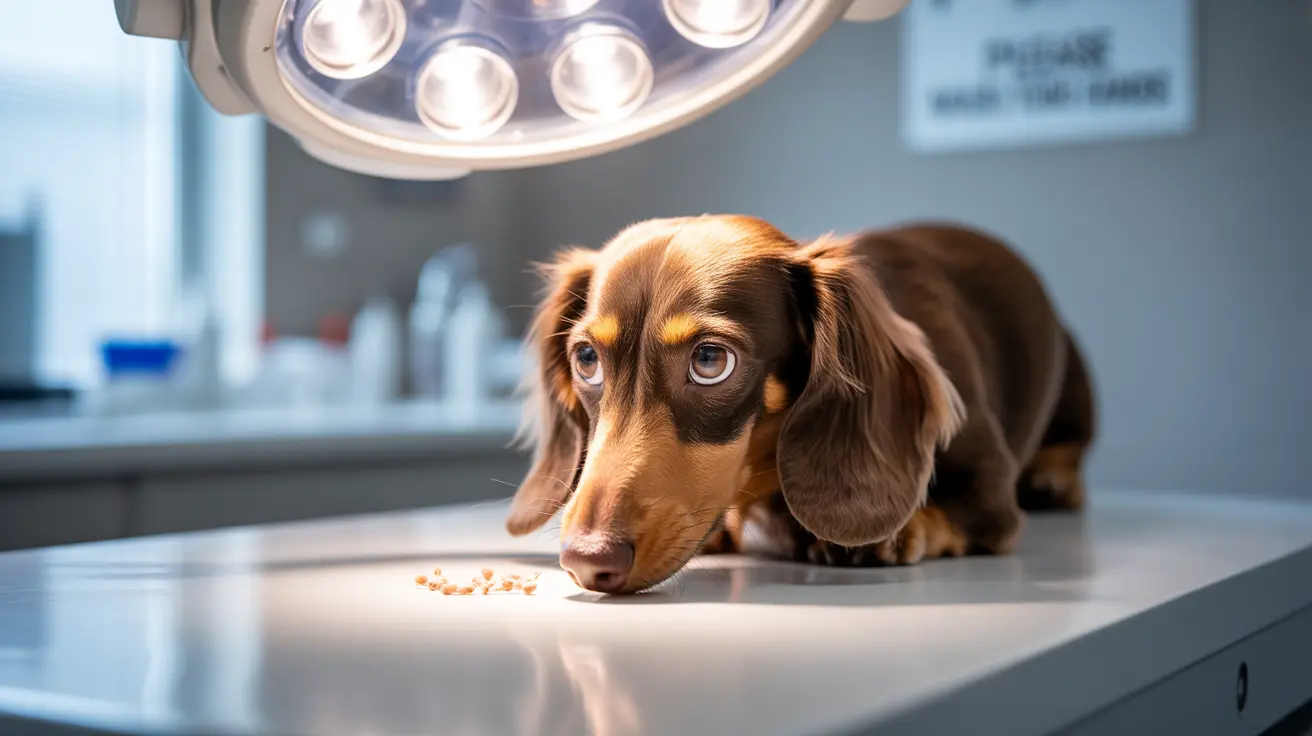What Nasal Mites Look Like in Dogs
Nasal mites in dogs, scientifically known as Pneumonyssoides caninum, are tiny parasitic arachnids that can sometimes be visible to the naked eye. These oval-shaped parasites are pale yellow in color and measure approximately 1-1.5mm in length. While they're occasionally visible crawling near a dog's nostrils in bright light, they typically reside deep within the nasal passages and sinuses.
Identifying Nasal Mite Symptoms
Dogs infected with nasal mites typically display several distinctive symptoms that owners should watch for:
- Frequent and persistent sneezing
- Reverse sneezing (sudden, sharp inward breaths)
- Nasal discharge that may be clear or mucoid
- Nosebleeds (epistaxis)
- Excessive pawing at the nose
- Head shaking
- Impaired sense of smell
Diagnostic Procedures and Visual Confirmation
Veterinarians use several methods to diagnose nasal mites, often combining visual inspection with more advanced techniques:
Direct Visualization
In some cases, veterinarians can spot mites near the dog's nostrils using bright light and magnification. However, this method isn't always reliable as mites often remain deeper in the nasal passages.
Advanced Diagnostic Imaging
More definitive diagnosis often requires:
- Rhinoscopy (viewing inside the nasal passages with a scope)
- Nasal flushing to collect samples
- Microscopic examination of nasal discharge
- Sometimes X-rays or CT scans to rule out other conditions
Treatment Options for Nasal Mites
Once diagnosed, several effective treatment options are available:
- Milbemycin oxime (administered orally)
- Ivermectin treatments
- Selamectin applications
- Imidacloprid/moxidectin combinations
Treatment typically spans several weeks to ensure complete elimination of the mites. Most dogs show significant improvement within days of starting treatment.
Prevention Strategies
While nasal mites can be effectively treated, prevention is always preferable. Key preventive measures include:
- Regular parasitic preventive medications
- Avoiding contact with infected dogs
- Maintaining good hygiene in kennels and dog parks
- Regular veterinary check-ups
Frequently Asked Questions
What does a picture of nasal mites in dogs look like and can I see them on my dog's nose?
Nasal mites appear as tiny, pale yellow, oval-shaped organisms about 1-1.5mm long. While they can occasionally be visible on a dog's nose in bright light, they're usually too small to see without magnification and typically remain hidden inside the nasal passages.
How can I tell if my dog has nasal mites from symptoms like sneezing or nosebleeds?
Common signs include frequent sneezing, reverse sneezing, nasal discharge, nosebleeds, pawing at the nose, and head shaking. However, these symptoms can also indicate other conditions, so veterinary diagnosis is essential.
What are the most effective treatments for canine nasal mites shown in pictures and recommended by vets?
Veterinarians typically recommend antiparasitic medications such as milbemycin oxime, ivermectin, or selamectin. Treatment usually involves multiple doses over several weeks to ensure complete elimination of the mites.
How do veterinarians diagnose nasal mites in dogs using nasal flushing or endoscopy images?
Veterinarians use rhinoscopy (endoscopic examination) to visualize the nasal passages and may perform nasal flushing to collect samples. These samples are then examined under a microscope to confirm the presence of mites.
Can nasal mites in dogs be prevented, and are there pictures that show how prevention helps?
Prevention primarily involves regular use of parasitic preventive medications and avoiding contact with infected dogs. While prevention methods themselves aren't easily photographed, maintaining good hygiene and regular veterinary care are key preventive measures.






